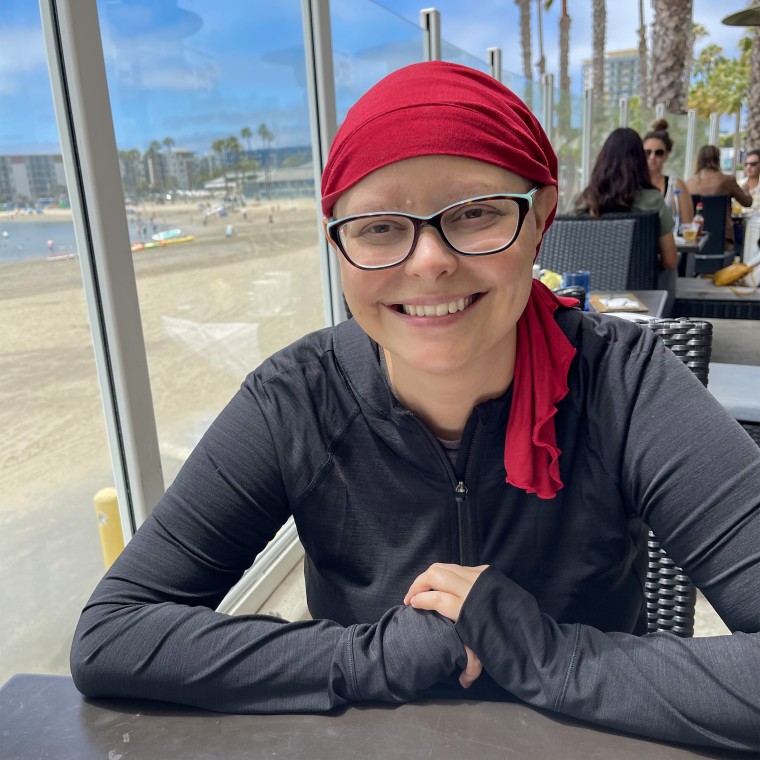Lenacapavir: Landmark deal paves way for cheaper HIV/ Aids protection jab – BBC

Report on Lenacapavir Accessibility and its Contribution to Sustainable Development Goals
Introduction: A Breakthrough in Global Health Equity
A new agreement will make the HIV prevention drug, Lenacapavir, available at a significantly reduced cost to over 100 low- and middle-income countries. This initiative represents a critical advancement in the global effort to end the HIV/Aids epidemic, directly aligning with the objectives of the Sustainable Development Goals (SDGs), particularly SDG 3 (Good Health and Well-being).
Drug Profile and Strategic Rollout
Lenacapavir is a breakthrough long-acting injectable for HIV prevention with several key advantages over existing treatments.
- Mechanism: The drug functions by preventing the HIV virus from replicating within cells.
- Administration: It is administered via injection twice a year, providing six months of protection per dose.
- Efficacy: A trial conducted by the drug’s manufacturer, Gilead, demonstrated a 100% success rate.
- Advantage over PrEP: It is intended to replace daily oral pre-exposure prophylaxis (PrEP), which has lower adherence rates and access challenges, with only 18% of potential beneficiaries currently reached.
The rollout is planned in phases, with a focus on equitable access:
- The drug will initially be available at a cost of $28,000 per person annually.
- A lower-cost generic version is expected to be available within 18 months, pending regulatory approval.
- By 2027, this affordable version will be rolled out across 120 low- and middle-income countries.
Economic Impact and Alignment with SDG 10 (Reduced Inequalities)
The initiative drastically reduces the financial barrier to accessing this life-saving treatment, a key component of SDG 10. The price reduction is a critical step in mitigating health inequalities between high-income and low-income nations.
- Original Cost: $28,000 per person, per year.
- Reduced Cost: $40 per person, per year.
- Impact: This price slash of over 99% makes the breakthrough treatment economically feasible for health systems in developing countries, including South Africa, which has the highest number of HIV cases globally.
Advancing SDG 3: Good Health and Well-being
This program directly addresses SDG Target 3.3, which aims to end the epidemic of AIDS by 2030. The current global HIV statistics underscore the urgency of this intervention:
- Over 40 million people are currently living with HIV.
- In the last year, 1.3 million people contracted HIV.
- Over 600,000 people died from AIDS-related illnesses.
The potential impact of widespread access to Lenacapavir is substantial. One study suggests that increasing access to just 4% of the population could prevent up to 20% of new HIV infections.
Empowering Vulnerable Populations and Promoting SDG 5 (Gender Equality)
The long-acting nature of Lenacapavir is particularly beneficial for vulnerable populations who face barriers to consistent daily medication. This contributes to SDG 5 by empowering women and girls with greater control over their sexual and reproductive health.
Key populations that stand to benefit include:
- Adolescent girls and young women
- LGBT people
- Sex workers
- People who use drugs
The Role of Global Partnerships (SDG 17)
The agreement exemplifies the multi-stakeholder collaboration championed by SDG 17 (Partnerships for the Goals). The success of this initiative is built on a partnership between public, private, and civil society organizations.
Key partners include:
- The Clinton Health Access Initiative
- The Gates Foundation
- Wits RHI (a South African research institute)
This collaboration is essential for navigating the next steps, which involve building demand, securing government commitments, and preparing health systems for the rapid introduction and scaling of the drug.
Analysis of the Article in Relation to Sustainable Development Goals
-
Which SDGs are addressed or connected to the issues highlighted in the article?
- SDG 3: Good Health and Well-being: The entire article is centered on a major public health issue, HIV/AIDS. It discusses a new preventative drug, Lenacapavir, which has the potential to “bring the world closer to ending the HIV/Aids epidemic.” The article provides statistics on the scale of the problem, such as “1.3 million people still contracted HIV last year, and more than 600,000 people died from AIDS-related illnesses,” directly linking the drug’s rollout to improving health outcomes and combating a major communicable disease.
- SDG 10: Reduced Inequalities: The article explicitly addresses health inequalities between countries and within communities. The initiative’s goal is to make the drug available at a “lower cost in over 100 low-income countries” and “120 low- and middle-income countries.” It also highlights the drug’s potential to help “underserved communities” and vulnerable populations who struggle with access, including “adolescent girls and young women, LGBT people, sex workers, and those who use drugs.” This directly tackles inequality in access to essential healthcare.
- SDG 17: Partnerships for the Goals: The article clearly identifies a multi-stakeholder partnership as the driving force behind this initiative. It states that the agreement “was reached between the Clinton Health Access Initiative in partnership with the Gates Foundation and other groups, including South African research institute, Wits RHI.” This collaboration between foundations, health initiatives, and research institutes exemplifies the partnerships needed to achieve the SDGs.
-
What specific targets under those SDGs can be identified based on the article’s content?
- Target 3.3: “By 2030, end the epidemics of AIDS, tuberculosis, malaria and neglected tropical diseases…” The article’s central theme is the potential of the new drug to “end the HIV/Aids epidemic.” The development and distribution of a highly effective preventative drug like Lenacapavir is a direct action towards achieving this target.
- Target 3.8: “Achieve universal health coverage, including… access to safe, effective, quality and affordable essential medicines… for all.” The article’s focus on slashing the drug’s price from “$28,000” to just “$40” per year for low- and middle-income countries is a clear effort to ensure access to “affordable essential medicines.” The goal is to give “millions access to the breakthrough treatment,” which aligns with the principle of universal health coverage.
- Target 17.17: “Encourage and promote effective public, public-private and civil society partnerships…” The agreement mentioned between the Clinton Health Access Initiative, the Gates Foundation, and Wits RHI is a direct example of the public-private and civil society partnerships that this target aims to foster for sustainable development.
-
Are there any indicators mentioned or implied in the article that can be used to measure progress towards the identified targets?
- Indicator 3.3.1 (Number of new HIV infections per 1,000 uninfected population): The article directly relates to this indicator by stating the drug’s purpose is to “reduce new infections.” It provides a quantifiable potential impact: “increasing access to the injection to just 4% of the population could prevent up to 20% of new HIV infections.” It also gives a baseline figure of “1.3 million people” who contracted HIV last year, which progress can be measured against.
- Indicator related to Target 3.8 (Proportion of population with access to affordable essential medicines): The article implies this indicator by highlighting a current gap in access: “only 18% of those who could benefit from PrEP currently have access.” The rollout of the new, more accessible drug aims to increase this percentage significantly. The price drop from $28,000 to $40 is a direct measure of improved affordability.
- Implied Indicator (Number of countries with access to affordable medicine): The plan to roll out the lower-cost version “across 120 low- and middle-income countries” serves as a clear, measurable indicator of the initiative’s reach and progress in scaling up access to this essential medicine.
-
Create a table with three columns titled ‘SDGs, Targets and Indicators” to present the findings from analyzing the article.
SDGs Targets Indicators SDG 3: Good Health and Well-being Target 3.3: End the epidemic of AIDS. Indicator 3.3.1: Number of new HIV infections. (Article mentions 1.3 million new infections last year and the drug’s potential to prevent up to 20% of new infections). Target 3.8: Achieve universal health coverage and access to affordable essential medicines. Implied Indicator: Percentage of the at-risk population with access to preventative medicine. (Article states only 18% currently have access to PrEP, which the new drug aims to improve). SDG 10: Reduced Inequalities Target 10.2: Promote the inclusion of all. Implied Indicator: Access to healthcare for vulnerable populations. (Article specifies the drug will help “adolescent girls and young women, LGBT people, sex workers, and those who use drugs”). SDG 17: Partnerships for the Goals Target 17.17: Encourage effective public-private and civil society partnerships. Implied Indicator: Number and scope of multi-stakeholder partnerships. (Article identifies the partnership between the Clinton Health Access Initiative, the Gates Foundation, and Wits RHI).
Source: bbc.com

What is Your Reaction?
 Like
0
Like
0
 Dislike
0
Dislike
0
 Love
0
Love
0
 Funny
0
Funny
0
 Angry
0
Angry
0
 Sad
0
Sad
0
 Wow
0
Wow
0
















































/environment-climate-change-and-health-(ech)/water-sanitation-hygiene-and-health-(wsh)/landfill-tuvalu-36092.tmb-1200v.jpg?sfvrsn=5c21fe40_1#)

.jpg.webp?itok=0ZsAnae9#)


























